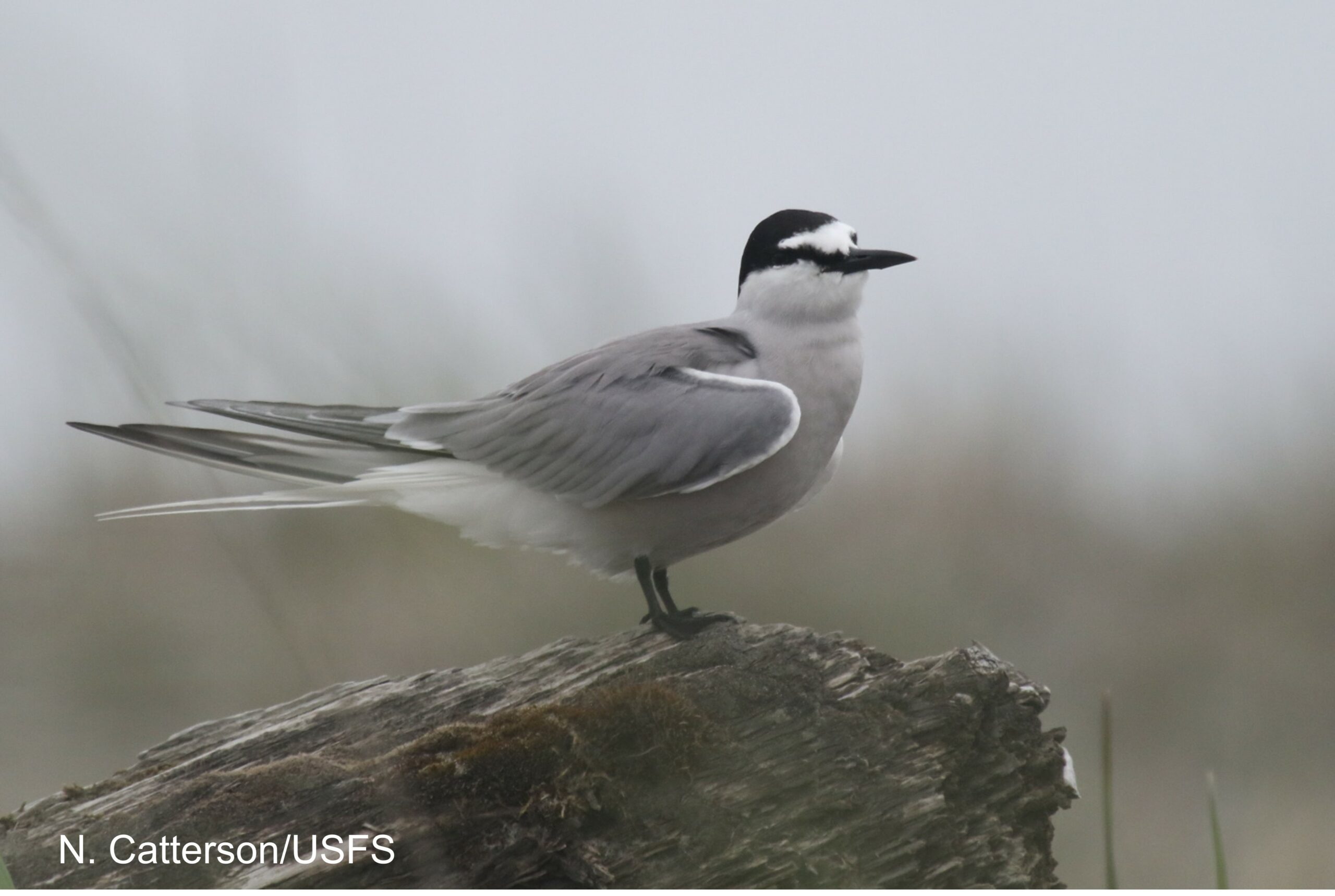Statewide Aleutian Tern Survey

PROJECT
Statewide Aleutian Tern Surveys
Aleutian Tern Population Assessment and Conservation: Implementation of a Statewide Monitoring Framework
Background
The Aleutian tern (Onychoprion aleuticus) is a small seabird with breeding sites restricted to Alaska and the Russian Far East. While population trend information for Russian populations is sparse, populations at known breeding sites in Alaska have declined dramatically in recent decades. A recent study (Renner et al. 2015) estimated that the population at known breeding colonies has declined by 8.1% annually since 1960, or 92.9% over three generations. If this estimate is representative of the statewide population, it would be the steepest decline of any seabird species in Alaska. Given the lack of a formal monitoring effort across the range, uncertainties related to census methods, and an inability to assess if birds have dispersed from declining colonies to as-of-yet unknown colonies, the Aleutian tern has been included on several species watch lists. The Aleutian tern was listed as a Species of Greatest Conservation Need (SGCN) in the 2015 Alaska Wildlife Action Plan and remains a SGCN in the 2022 Alaska Species Ranking System. Due to the rapid declines at known colony sites in Alaska, the species was listed as “vulnerable” by the International Union for the Conservation of Nature and Natural Resources and is also listed as a Species of Conservation Concern by the U.S. Fish and Wildlife Service.
PROJECT DESCRIPTION
As part of a larger, ongoing effort to gather more information about the population status of the species, a group of agency, non-governmental organizations, and university researchers has been developing a plan to estimate the number of Aleutian terns in Alaska. We plan to complete a state-wide survey over the course of 3 years (2023-2025). In 2023, we surveyed the eastern Gulf of Alaska region (Gustavus to Cordova). In 2024, we plan to survey the Cook Inlet and Bristol Bay regions. In 2025, we plan to survey the Aleutian Islands and western Alaska (Cape Newenham to Cape Lisburne).
The surveys will use planes to cover the large swaths of potential nesting habitat along Alaska’s coastlines. Because Aleutian terns frequently nest with Arctic terns (Sterna paradisaea) and differentiating between the two species from a plane is difficult, biologists will also conduct ground-based surveys at potential colonies detected from the air.
The Prince William Sound Science Center is leading the project coordination duties and assisting with data collection efforts for the statewide survey.
What we will learn
The successful completion of the statewide survey will be an important first step for assessing the conservation status of this species.
PROJECT COORDINATOR
Anne Schaefer
PWS Science Center
aschaefer@pwssc.org
Collaborators
Megan Boldenow
U.S. Fish and Wildlife Service
Robin Corcoran
U.S. Fish and Wildlife Service
Michael Goldstein
U.S. Forest Service
Robb Kaler
U.S. Fish and Wildlife Service
Don Lyons
Oregon State University, National Audubon Society
Trent McDonald
McDonald Data Sciences
Liz Moore
U.S. Fish and Wildlife Service
Susan Oehlers
U.S. Forest Service
Heather Renner
U.S. Fish and Wildlife Service
Martin Renner
Tern Again Consulting
Marc Romano
U.S. Fish and Wildlife Service
RESEARCH PERIOD
2023-2025
FUNDING
National Fish and Wildlife Foundation






